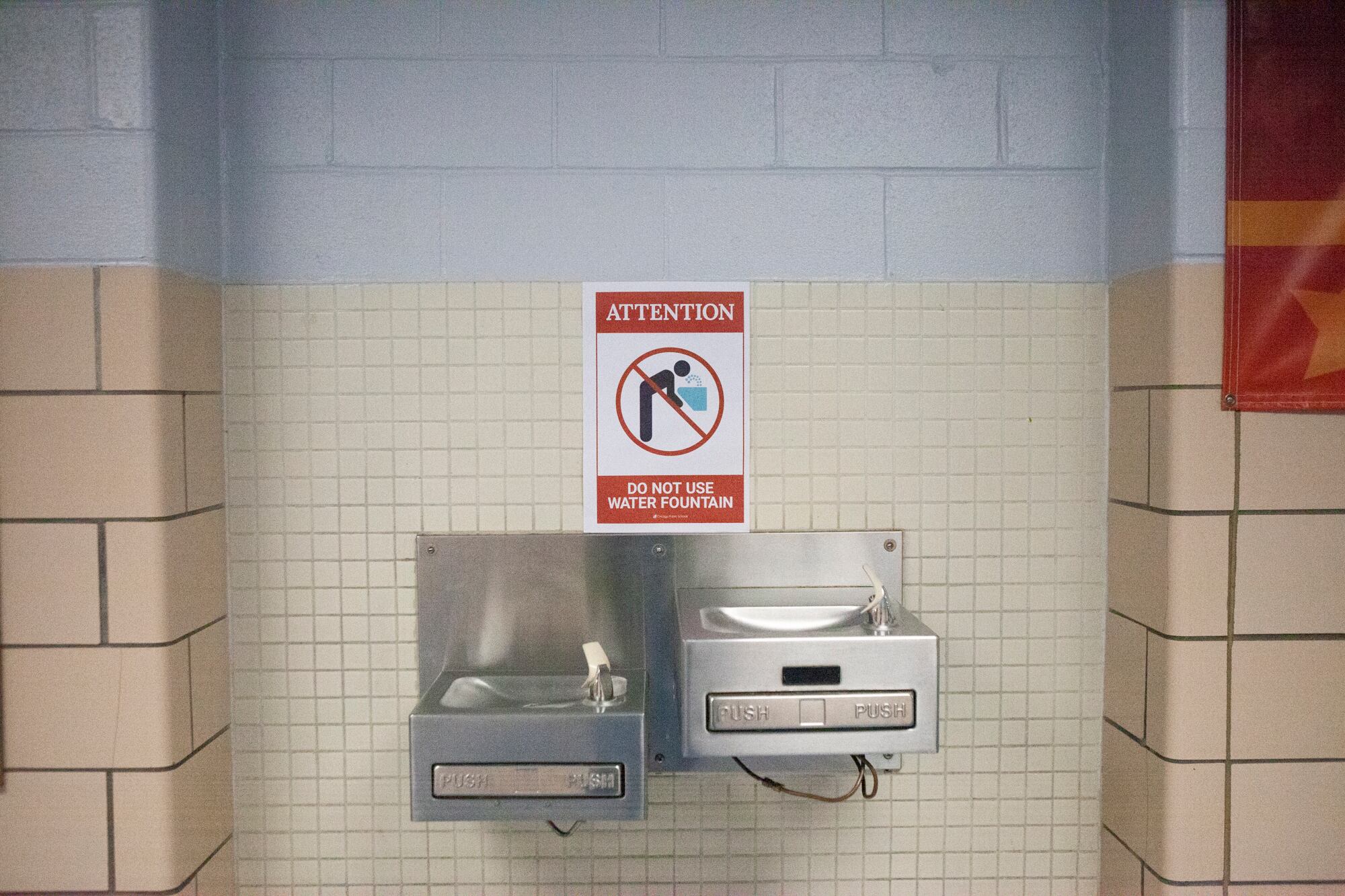As school officials continue to report more water fountains and sinks with high levels of lead across Tennessee, parents and lawmakers say the current law doesn’t go far enough to protect students.

State Rep. London Lamar, a Democrat from Shelby County, plans to file a bill requiring school leaders to notify parents within 24 hours of test results that show high lead levels, and requiring districts to publicly post all water test results. The bill also would require child care facilities to test for the toxic metal and lower the amount of lead that would be allowed in school water.
“I think transparency is very important,” she said. “We have a right to know what the water sources in our buildings look like so we can make better choices about our children and their education. You want to make sure it’s somewhere that they’re safe.”
Her bill passed in the state House of Representatives earlier this year, but the sudden end to the session because of the pandemic stalled its progress in the state Senate. She plans to reintroduce the bill for the legislative session that begins in January.
The proposal would lower the threshold for high lead levels to 15 parts of lead per billion parts of water (ppb). Under the current law, if a water sample has more than 20 ppb, school officials must shut off the water source. School officials then must report the results to parents at the school within five days and the Tennessee Department of Health within 24 hours.
Lamar said she also plans to advocate that districts receive money to eliminate the toxic metal from water sources, although she doesn’t know yet how much is needed.
The proposed changes are part of a growing concern nationwide about children’s exposure to lead in schools, especially in districts that educate students from families living in poverty and are more likely to have aging infrastructure. More than two dozen states have passed similar lead testing laws in the past five years. Lead in a child’s body can slow brain development, cause inattentiveness, and increase impulsive behavior, according to the Environmental Protection Agency.
So far, test results in Tennessee have revealed a quarter of districts have at least one school with high levels of lead in water. That includes test results since November 2019 that Chalkbeat obtained through an open records request to the Tennessee Department of Health. (Scroll down for a searchable table of water test results. You can search previous findings here.)
In the most recent batch of test results from across the state, about three-quarters of the water sources were sinks in classrooms, kitchens, or restrooms, where children likely drank from or staff prepared their food. The remainder were split between water fountains in hallways, near restrooms, or in classrooms; and places children likely did not have access to such as offices, janitor closets, and outdoor hoses, or were not reported.
School officials statewide began testing sinks, water fountains, and other water sources in old buildings for the toxic metal after legislators passed a law in 2018 spurred by the Flint, Michigan, water crisis in 2014.
Lead testing continues throughout the state, but without funding from the state to fix the water sources or carry out tests.
For example, Shelby County Schools, the largest district in the state, spent $100,000 last year to conduct water tests. Most of the district’s 150 buildings are more than 40 years old and already had a $500 million backlog in repair needs. School board members this week said they would urge state lawmakers to make funding available as they plan for ways to fix the water sources they shut off.
Test results from the past year included lead levels that ranged from 15.1 ppb in a kitchen pot filler in Tipton County to 3,950 ppb in a classroom sink in Warren County. The highest levels were rare though. Most lead levels were below 100 ppb, which is still five times the state’s threshold.
Tipton County, near Memphis, had the most water sources with high levels of lead in the past year: 52 water sources in 10 schools, bringing its total to 116 water sources since last year. Other districts are spreading their testing over two years, the minimum set by state law, so their complete results may not be known for awhile.
The latest data from Shelby County Schools added 30 water sources in 19 schools. Each of the schools had previously reported at least one water source containing high levels of lead.
The state law also requires districts to annually test water samples between 15 and 20 ppb until results come back below the threshold. The latest data show 49 water sources officials retested in the past year across 15 schools in 11 districts. More than half were unresolved and still had high levels of lead.
That’s why parents like Heidi Rupke want to see all results — even if the water source didn’t meet the state’s threshold of concern. She stood outside Idlewild Elementary School in Memphis for several mornings to collect signatures on a petition urging the local district to release more data. She said she would rather know all the places her children could be exposed to lead.
“As a parent, if I see an issue, I try to resolve it, not just for the short term but the long term,” she said.






